18261 Results for “”
-
Trailer Watch: Andrew Norman Wilson’s “It’s Not What the World Needs Right Now”
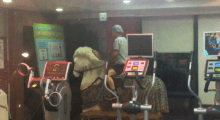
Earlier this year, filmmaker Andrew Norman Wilson (profiled as part of our 25 New Face of Independent Film list in 2021) published an essay in The Baffler about his struggles to get his work financed, made and seen. Entitled “It’s Not What the World Needs Right Now,” the (mostly) comic essay made enough of a splash that Wilson has subsequently presented it (in New York, Los Angeles and Locarno) as a live one-man show while dressed as Abraham Lincoln. Now the presentation form returns to New York’s Metrograph this Friday, and we’re pleased to share Wilson’s trailer for the event, […]
by Filmmaker Staff on Sep 30, 2024 -
The Ofcom Gap: VOD, UK Broadcasters and Ethical Fact-Based Filmmaking
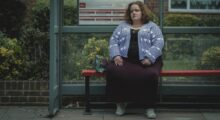
Netflix’s breakout hit Baby Reindeer brought into vivid relief an issue long at play in the UK: VOD platforms do not have to jump through the same regulatory hoops as broadcasters, for whose programs “compliance” is a necessary headache. The UK’s extensive regulatory framework for broadcasting is overseen by the UK’s Office of Communications (Ofcom), a super regulator covering a vast array of communications from postal services to internet provision and online safety, radio and television. The ten sections of Ofcom’s broadcasting code provide a detailed roadmap for broadcasters to ethically make and deliver programs, addressing a vast number of […]
by Carol Nahra on Sep 30, 2024 -
“How Would Frederick Wiseman Order This Procession of Images?”: Making Robert Kolodny’s The Featherweight
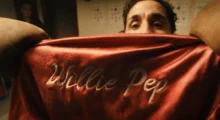
Robert Kolodny’s Venice-premiering The Featherweight is the dramatic story of real-life boxer Willie Pep as he exits retirement to attempt a comeback in the ring — all as he’s shadowed by a documentary crew. The film’s action occurs two decades after Pep’s 1940s heyday, with Kolodny and his team, who include producer and screenwriter Steve Loff and editor Robert Greene, convincingly replicating the look and rhythms of 1960s verite documentary to meditate on both the past as well as the boxing film’s durability in the present. Wrote The New Yorker’s Richard Brody in his review, “It’s an instant classic of […]
by Scott Macaulay on Sep 28, 2024 -
“We Needed to Steer the Film to a Place Where It Wasn’t a Biopic”: Cinematographer Turned Director Ellen Kuras on Her Kate Winslet-Starring Lee

For years filmmakers have tried to tell Lee Miller’s story. Famous first as a model for artists like Man Ray, then as a fashion photographer, Miller became a war correspondent during World War II. She captured some of the most iconic images of her time, from views of Hitler’s life to the horrors of concentration camps. For her feature debut as a director, Ellen Kuras was determined not to fall into standard biopic conventions. Starting from a book of Miller’s photographs, she collaborated with star and producer Kate Winslet and writers Marian Hume, Liz Hannah, and John Collee to find […]
by Daniel Eagan on Sep 28, 2024 -
21 Films to See at the 2024 New York Film Festival
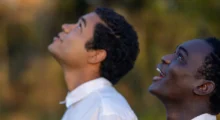
With this year’s New York Film Festival underway, Filmmaker is recommending 18 films to watch over the course of the festival, which runs this year from September 27 through October 14. This year, our staff has covered several festivals— including TIFF, Venice, and Cannes,—whose premieres will be screening at NYFF during these upcoming weeks, some of which have previously been featured on our site. Below, we have compiled a list of the must-see films playing at the New York Film Festival, along with links and excerpts from director interviews and festival dispatches as well as, for three titles we have […]
by Filmmaker Staff on Sep 27, 2024 -
NYFF 2024: The Brutalist
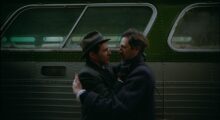
Brady Corbet’s The Brutalist took seven years to realize, a process he understandably seems to have found traumatic—both the film and interviews he’s given about it are about how financiers are monsters. Per Corbet, The Brutalist “was made for under $10 million. But I still need millions of dollars. That’s very complicated because it means I often have to interface with people with whom I don’t share the same ethics and morals.” Process is text: Anyone who’s ever worked for an equally oblivious and imperious rich person, one whose underlings can only work out how their near-impossible plan of action […]
by Vadim Rizov on Sep 27, 2024 -
“Making the Invisible Visible”: Nelson Carlo de los Santos Arias on Pepe
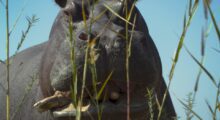
There’s nothing quite like happening into a film committed to not playing by the rules; that real-time realization, in the darkness of a movie theater, that the story you’re watching isn’t concerned with sticking to well-worn formulas so much as challenging your expectations around what cinema can do and be. Pepe is that kind of film. The first, per its subtitle, in a series of “studies of the imagination,” Nelson Carlo de los Santos Arias’s fourth feature is a cinematic UFO perched somewhere between hard facts and dreams. It is a work that celebrates imagination as the ultimate means to […]
by Leonardo Goi on Sep 27, 2024 -
Dozens of Filmmakers Sign Petition Calling on the New York Film Festival to Cut Ties with Sponsor Bloomberg Philanthropies
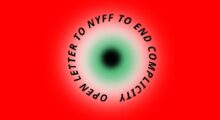
On the eve of the opening of the 62nd New York Film Festival, dozens of filmmakers have published an open letter calling on the festival to end its partnership with Contributing Partner Bloomberg Philanthropies, which they write is “directly implicated in facilitating settlement infrastructure in the West Bank and denying Palestinians their basic rights.” Among the signers are over three dozen filmmakers with films in the current 2024 edition, including Mike Leigh (Hard Truths), Julia Loktev (My Undesirable Friends: Part I – Last Air in Moscow), Neo Sora (Happyend), Basel Adra, Hamdam Ballal and Yuval Abraham (No Other Land), Truong […]
by Scott Macaulay on Sep 26, 2024 -
“Punching Above My Weight”: Director Simon Hacker on Partnering with NBA Star Gordon Hayward and Self-Distributing His Indie Comedy, Notice to Quit
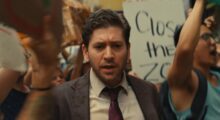
I first met Simon Hacker more than a decade ago when I was teaching at the School of Visual Arts in New York and Simon was a film student. He stuck out as someone who responded to what most people around him in the classroom weren’t much interested in: tradition. While the nascent auteurists were looking to reinvent the wheel, Simon grabbed hold of the ideas of a couple of people I introduced him to: Alexander Mackendrick and David Mamet. I was preaching the basics of classical narrative storytelling, and Simon took the time to listen. “What happens next?” became […]
by Paul Cronin on Sep 26, 2024 -
“I Really Wanted to Push Back Against This Illusion of Japanese-ness”: Neo Sora on Happyend
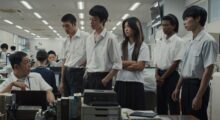
“Ah man, I could talk about it forever.” It is the day after Happyend’s Venice premiere and director Neo Sora is holding court for a parade of journos in the ballroom of an Art Nouveau hotel on the Lido. I’m the last in line, and we’ve been chatting for almost half an hour when his face suddenly lights up. The topic Sora could talk about forever and to which we devote the last few minutes of our allotted time is music, a connection that long predates his first feature-length foray into fiction. An eclectic audiovisual artist, Sora’s a member of […]
by Leonardo Goi on Sep 25, 2024
